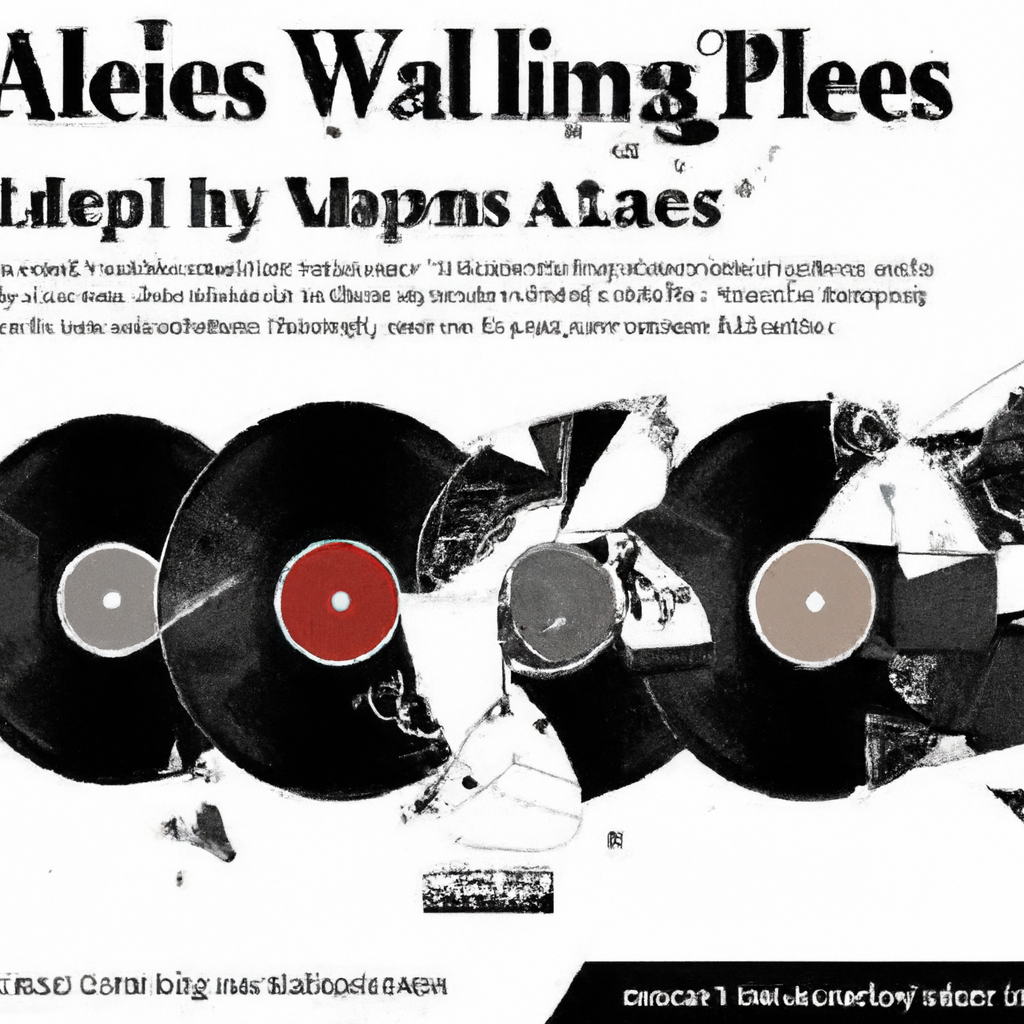Think about taking part in a online game the place the result of the story relies upon fully on the choices you make. Every selection you make not solely alters the trail of the narrative but in addition influences the audio components that accompany the gameplay. The seamless integration of audio into interactive narratives is an enchanting phenomenon that provides depth and immersion to the gaming expertise. On this article, we are going to discover the intricate methods wherein audio components adapt to participant decisions, creating a very customized and fascinating storytelling expertise.

Understanding Audio Components in Interactive Narratives
Overview of interactive narratives
Interactive narratives are storytelling experiences that enable the participant to actively take part and make decisions that form the result of the story. Not like conventional linear narratives, interactive narratives provide branching paths and ranging outcomes based mostly on the choices made by the participant. These narratives could be present in numerous kinds, similar to video video games, digital actuality experiences, and interactive motion pictures.
Significance of audio components in interactive narratives
Audio components play an important function in enhancing the immersive and interesting nature of interactive narratives. They’ve the facility to move the participant into the world of the story and evoke feelings which are integral to the narrative expertise. By offering audio cues, dialogues, sound results, and music, audio components not solely set the temper but in addition enrich the general gameplay expertise.
Kinds of audio components in interactive narratives
There are a number of forms of audio components that contribute to the interactive narrative expertise:
-
Music: Music is a vital part of any interactive narrative. It helps set up the tone, ambiance, and feelings surrounding the gameplay. It could possibly vary from background scores to dynamic music that adapts to the participant’s decisions.
-
Sound Results: Sound results are used to create a extra immersive and practical expertise. They will vary from footsteps, weapon sounds, environmental noises, and extra. Sound results present a further layer of interactivity and suggestions to the participant.
-
Voice Performing and Dialogues: Voice appearing and dialogues convey characters to life and permit gamers to interact in conversations. They improve the storytelling and character improvement, making the participant really feel extra linked to the narrative.
-
Interactive Audio Suggestions: Interactive audio suggestions offers real-time responses to participant actions and decisions. It helps convey the results of their choices, guiding them by way of the narrative and reinforcing the interactivity of the expertise.
-
Emotional Influence and Ambiance: Audio components are used to create an emotional affect and set up the ambiance of the narrative. Through the use of the correct mixture of music, sound results, and voice appearing, the narrative can elicit particular feelings and immerse the participant within the story.
Adaptive Audio Design
Definition of adaptive audio design
Adaptive audio design refers back to the strategy of dynamically adjusting and adapting audio components in response to participant decisions, actions, and the development of the narrative. It permits audio to be versatile and responsive, making a extra customized and immersive expertise for the participant.
Objective of adaptive audio design in interactive narratives
The aim of adaptive audio design is to reinforce the participant’s sense of company and immersion within the narrative. By adapting audio components to mirror the participant’s decisions and actions, it creates a extra cohesive and interactive gameplay expertise. It helps in establishing a deeper emotional connection between the participant and the narrative, making your complete expertise extra participating and memorable.
Advantages of adaptive audio design
There are a number of advantages to incorporating adaptive audio design in interactive narratives:
-
Personalised Expertise: Adaptive audio design permits the narrative to answer the participant’s decisions, actions, and preferences. This creates a extra customized expertise, making the participant really feel extra linked to the story and characters.
-
Enhanced Immersion: By adapting the audio components, the narrative turns into extra immersive and plausible. The tailor-made audio cues, music, and sound results assist transport the participant into the digital world, facilitating a deeper stage of engagement.
-
Emotional Engagement: By adaptive audio design, the narrative can evoke a variety of feelings based mostly on the participant’s decisions. This emotional engagement enhances the participant’s funding within the story, finally resulting in a extra fulfilling narrative expertise.
-
Replayability: Adaptive audio design provides one other layer of replayability to the interactive narrative. By adapting audio components to completely different decisions and branching paths, gamers are inspired to discover different outcomes and make completely different choices, additional enriching their gaming expertise.
-
Creative Expression: Adaptive audio design permits for inventive expression and experimentation. It allows builders to craft distinctive audio experiences that mirror the narrative’s themes and interact gamers on a deeper stage.
Participant Decisions and Audio Adaptation
Significance of participant decisions in interactive narratives
Participant decisions are the cornerstone of interactive narratives. They provide company and management to the participant, permitting them to form the result of the story. Every determination made by the participant has penalties that may affect the narrative’s development, character relationships, and total gameplay expertise.
How audio components can adapt to participant decisions
Audio components can adapt to participant decisions by reflecting and responding to their choices. Relying on the participant’s decisions, audio components similar to music, sound results, and voice appearing could be dynamically modified or triggered to align with the narrative’s present state. This adaptation helps reinforce the participant’s company and provides depth to the interactive expertise.
Strategies for audio adaptation based mostly on participant decisions
There are numerous methods that may be employed to adapt audio components based mostly on participant decisions:
-
Dynamic Music Adaptation: Through the use of layered music tracks, completely different musical themes could be seamlessly blended to accommodate the participant’s decisions and actions. Transition methods like crossfading or tempo adjustments could be employed to easily transition between completely different tracks based mostly on the participant’s choices. Moreover, dynamic music depth could be adjusted based mostly on the participant’s reactions and the narrative’s present state.
-
Contextual Sound Results: Sound results could be triggered based mostly on the participant’s actions or decisions. For instance, opening a door or firing a weapon would set off an acceptable sound impact. Through the use of various sound results for various decisions, the participant’s choices could be acoustically bolstered, offering a extra immersive and responsive expertise. Moreover, spatial sound methods could be employed to create a extra practical and immersive audio setting.
-
Voice Performing and Dialogues: A number of dialogue choices could be supplied to the participant based mostly on their decisions. Adaptive dialogues enable the narrative to department out and accommodate completely different actions, offering a way of consequence and company. Dynamic voice modulation may also be utilized to match the feelings and reactions of the characters to the participant’s choices, enhancing the believability and immersiveness of the narrative.
-
Interactive Audio Suggestions: Actual-time audio suggestions could be supplied to the participant to mirror their choices and actions. Through the use of audio cues, the narrative can point out the results of the participant’s decisions, serving to information their future choices. Fastidiously timed and synchronized audio and visible components can additional improve the participant’s understanding of the narrative’s development.
-
Emotional Influence and Ambiance: Audio components could be tailor-made to create an emotional affect and set up the ambiance of the narrative based mostly on participant decisions. By adapting the music, sound results, and even voice appearing to mirror the present state of the narrative, the participant can have a extra profound emotional connection to the story and characters.
1. Dynamic Music Adaptation
Utilizing layered music tracks
To realize dynamic music adaptation, layered music tracks could be employed. Every layer represents a distinct musical theme that may be triggered based mostly on the participant’s decisions and actions. By transitioning between these layers or mixing them collectively, the music adapts to the altering narrative and participant choices, making a extra immersive and interesting audio expertise.
Transition methods based mostly on participant decisions
Transition methods like crossfading, the place one monitor regularly fades out whereas one other fades in, can be utilized to easily transition between completely different musical themes. This method ensures that the audio adjustments are seamless and don’t disrupt the circulation of the gameplay. Different methods similar to tempo adjustments or modulation may also be employed to mirror the participant’s decisions and keep coherence throughout the music.
Dynamic music depth based mostly on participant reactions
The depth of the music could be adjusted based mostly on the participant’s reactions and the narrative’s present state. For instance, throughout intense motion sequences, the music can dynamically improve in tempo or incorporate extra energetic components to match the heightened gameplay. Equally, throughout quieter or emotional moments, the music can grow to be extra subdued and introspective, reinforcing the temper and interesting the participant’s feelings.

2. Contextual Sound Results
Triggering sound results based mostly on participant actions
Contextual sound results could be triggered based mostly on the participant’s actions or decisions. For instance, when the participant opens a door, a corresponding sound impact of a creaking door could be performed. By offering instant audio suggestions that aligns with the gameplay, the participant feels a stronger sense of connection and responsiveness throughout the narrative.
Different sound results for various decisions
By having completely different sound results for numerous decisions, the narrative conveys the results of the participant’s choices. As an example, selecting to struggle a personality as a substitute of befriending them might set off aggressive fight sound results. Conversely, choosing a peaceable decision is likely to be accompanied by extra refined and harmonious sounds. These various sound results present audio reinforcement for the participant’s decisions, including depth and immersion to the interactive expertise.
Spatial sound for immersive experiences
Spatial sound methods can be utilized to create a extra immersive and practical audio setting. By simulating 3D audio, sound results could be positioned throughout the digital area to correspond to the in-game objects or characters producing them. This spatial consciousness enhances the participant’s sense of presence throughout the interactive narrative, permitting them to listen to sounds coming from completely different instructions and immersing them additional into the sport world.
3. Voice Performing and Dialogues
A number of dialogue choices for participant decisions
A number of dialogue choices could be provided to the participant based mostly on their decisions, permitting them to form the narrative by way of their conversations. These dialogue choices can result in completely different outcomes, branching paths, and deeper character interactions. By offering a variety of decisions, gamers really feel extra concerned and invested within the story, as their choices straight affect the dialogue and character interactions.
Branching narratives and adaptive dialogues
Adaptive dialogues allow the narrative to department out based mostly on the participant’s choices. These branching narratives enable for a extra dynamic and customized storytelling expertise. Relying on the participant’s decisions, the dialogues can adapt, creating distinctive and tailor-made interactions between the participant character and different in-game characters. This adaptive dialogue system provides depth and replayability to the interactive expertise.
Dynamic voice modulation based mostly on participant choices
Dynamic voice modulation could be utilized to match the feelings and reactions of the characters to the participant’s choices. By adjusting the tone, pitch, or depth of the voice appearing, the sport creates a extra plausible and immersive expertise. When a participant makes a selection that results in a optimistic final result, the character’s voice could mirror a way of satisfaction or pleasure. Conversely, if a selection has damaging penalties, the voice could painting disappointment or frustration, additional enhancing the participant’s emotional engagement.

4. Interactive Audio Suggestions
Actual-time audio suggestions for participant choices
Interactive audio suggestions offers real-time responses to the participant’s choices and actions. It helps convey the results of their decisions, highlighting the affect on the narrative. For instance, when a participant makes a crucial determination, a particular sound impact or musical cue could be triggered to suggest the importance of their selection. This instant audio suggestions reinforces the participant’s company and guides them by way of the interactive narrative.
Audio cues for indicating penalties
Audio cues can be utilized to point the results of the participant’s choices. By assigning distinctive sound results or musical motifs to particular outcomes, the participant can rapidly perceive the repercussions of their decisions. For instance, a triumphant musical cue could play when the participant achieves a optimistic final result, whereas a somber or suspenseful sound impact could point out a extra damaging consequence. These audio cues make the results extra tangible and improve the participant’s understanding of the narrative’s branching paths.
Synchronizing audio and visible components
Synchronizing audio and visible components is essential for making a cohesive and immersive gameplay expertise. By aligning the timing of sound results, dialogue, and music with the corresponding visible occasions on display screen, the audio-visual presentation turns into extra impactful and interesting. When executed successfully, this synchronization enhances the participant’s notion of the sport world and reinforces their immersion within the narrative.
5. Emotional Influence and Ambiance
Utilizing audio components to reinforce emotional affect
Audio components have the facility to evoke feelings and improve the emotional affect of the narrative. By using the correct mixture of music, sound results, and voice appearing, the interactive narrative can elicit a variety of feelings throughout the participant. For instance, a somber musical rating mixed with melancholic voice appearing and refined sound results can intensify emotions of disappointment or loss, making a deeply emotional expertise for the participant.
Creating immersive ambiance by way of sound
Sound is a robust instrument for creating immersive atmospheres in interactive narratives. By incorporating ambient sounds, environmental noises, and spatial sound methods, the narrative can transport the participant into completely different areas and settings. As an example, the sound of rain, footsteps, or distant conversations can contribute to a practical and immersive city setting. By rigorously crafting these audio components, the narrative can create a extra plausible and fascinating ambiance for the participant.
Adapting audio to mirror narrative tone
Audio components can adapt to mirror the narrative’s tone by adjusting the music, sound results, and voice appearing. Whether or not the narrative requires suspense, rigidity, pleasure, or tranquility, the audio components could be tailor-made to match the specified tone. By aligning the audio with the narrative’s temper and themes, the participant’s emotional engagement is heightened, leading to a extra cohesive and immersive interactive expertise.

6. Technical Issues
Audio middleware and engine integration
To implement adaptive audio design, using audio middleware and seamless integration with the sport engine is crucial. Audio middleware instruments similar to Wwise or FMOD present builders with the required instruments and techniques to dynamically adapt and management audio components throughout the interactive narrative. These instruments enable for straightforward administration of audio property, similar to music tracks, sound results, and voice appearing, guaranteeing the audio adaptation is seamless and environment friendly.
Reminiscence administration for adaptive audio components
Adaptive audio design requires cautious reminiscence administration to make sure that the audio components are easily built-in and don’t trigger efficiency points. Builders have to optimize the dimensions and format of audio recordsdata, implement environment friendly streaming and caching methods, and allocate reminiscence assets successfully. By balancing reminiscence utilization and audio high quality, the adaptive audio components could be seamlessly built-in with out compromising the general efficiency of the interactive narrative.
Compatibility with completely different platforms
Adaptive audio design needs to be suitable with numerous platforms and gadgets, guaranteeing a constant and immersive gameplay expertise for gamers throughout completely different techniques. This requires adapting the audio implementation to the technical specs and constraints of every platform whereas sustaining the integrity of the audio design. By contemplating platform-specific limitations and optimizing audio property accordingly, builders can be certain that the adaptive audio components are efficient and practical throughout a variety of gadgets.
Conclusion
The evolving function of audio components in interactive narratives has revolutionized the best way gamers have interaction with and expertise storytelling. By using adaptive audio design methods, builders can create extra customized, immersive, and interesting interactive narratives. The combination of dynamic music adaptation, contextual sound results, voice appearing, interactive audio suggestions, emotional affect, and ambiance enhances participant company, emotional connection, and immersion. As expertise continues to advance, the probabilities for audio adaptation in interactive narratives will solely develop, resulting in much more modern and fascinating gaming experiences.


